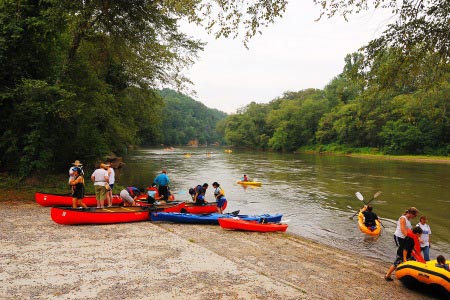|
Plumleaf Azalea
''Rhododendron prunifolium'', the plumleaf azalea, is a wild azalea that grows only in a few counties along the Georgia–Alabama border in the Chattahoochee River Valley. It is considered the rarest azalea in the Eastern United States. Providence Canyon is one of the most popular places to view the plumleaf azalea in the wild. References External linksThe Nature Conservancy Rhododendron, prunifolium Plants described in 1913 Flora of North America {{Ericaceae-stub ... [...More Info...] [...Related Items...] OR: [Wikipedia] [Google] [Baidu] |
John Kunkel Small
John Kunkel Small (January 31, 1869 – January 20, 1938) was an American botanist. Born on January 31, 1869, in Harrisburg Pennsylvania, Kunkel studied botany at Franklin & Marshall College and Columbia University. He was the first Curator of Museums at The New York Botanical Garden, a post in which he served from 1898 until 1906. From 1906 to 1934 he was Head Curator and then from 1934 until his death he was Chief Research Associate and Curator. Small's doctoral dissertation, published as '' Flora of the Southeastern United States'' in 1903, anrevised in 1913and 1933, remains the best floristic reference for much of the South. Assisted by the patronage of Charles Deering, Small traveled extensively around Florida recording plants and land formations. Small was an early botanist explorer of Florida, documenting many things for the first time, although the flora and fauna were well known to the local Seminole Indians. His first trip to the region was in 1901. Over the next 37 y ... [...More Info...] [...Related Items...] OR: [Wikipedia] [Google] [Baidu] |
John Guille Millais
John Guille Millais ( , also ; 24 March 1865 – 24 March 1931) was a British artist, naturalist, gardener and travel writer who specialised in wildlife and flower portraiture. He travelled extensively around the world in the late Victorian period detailing wildlife often for the first time. He is noted for illustrations that are of a particularly exact nature. Early life John Guille Millais was the fourth son and seventh child of Sir John Everett Millais, the Pre-Raphaelite Brotherhood painter, and his wife Effie Gray. John was raised in London and Perthshire with a wide interest in natural history, which embraced horticulture, hunting including big game hunting and wildfowl. As a boy he made a collection of birds shot around the coast of Scotland later recounted in his book "The Wildfowler in Scotland". This formed the basis of a lifetime collection of around 3,000 specimens that he later housed in a private museum in Horsham in West Sussex, England. Specimens from this co ... [...More Info...] [...Related Items...] OR: [Wikipedia] [Google] [Baidu] |
Azalea
Azaleas are flowering shrubs in the genus ''Rhododendron'', particularly the former sections ''Tsutsusi'' (evergreen) and '' Pentanthera'' (deciduous). Azaleas bloom in the spring (April and May in the temperate Northern Hemisphere, and October and November in the Southern Hemisphere), their flowers often lasting several weeks. Shade tolerant, they prefer living near or under trees. They are part of the family Ericaceae. Cultivation Plant enthusiasts have selectively bred azaleas for hundreds of years. This human selection has produced over 10,000 different cultivars which are propagated by cuttings. Azalea seeds can also be collected and germinated. Azaleas are generally slow-growing and do best in well-drained acidic soil (4.5–6.0 pH). Fertilizer needs are low. Some species need regular pruning. Azaleas are native to several continents including Asia, Europe and North America. They are planted abundantly as ornamentals in the southeastern US, southern Asia, and parts o ... [...More Info...] [...Related Items...] OR: [Wikipedia] [Google] [Baidu] |
Chattahoochee River
The Chattahoochee River forms the southern half of the Alabama and Georgia border, as well as a portion of the Florida - Georgia border. It is a tributary of the Apalachicola River, a relatively short river formed by the confluence of the Chattahoochee and Flint Flint, occasionally flintstone, is a sedimentary cryptocrystalline form of the mineral quartz, categorized as the variety of chert that occurs in chalk or marly limestone. Flint was widely used historically to make stone tools and start fir ... rivers and emptying from Florida into Apalachicola Bay in the Gulf of Mexico. The Chattahoochee River is about long. The Chattahoochee, Flint, and Apalachicola rivers together make up the Apalachicola–Chattahoochee–Flint River Basin (ACF River Basin). The Chattahoochee makes up the largest part of the ACF's drainage basin. Course The River source, source of the Chattahoochee River is located in Jacks Gap at the southeastern foot of Jacks Knob, in the very southeaste ... [...More Info...] [...Related Items...] OR: [Wikipedia] [Google] [Baidu] |
Providence Canyon
Providence Canyon State Outdoor Recreation Area is a List of Georgia state parks, Georgia state park located in Stewart County, Georgia, Stewart County in southwest Georgia (U.S. state), Georgia, United States. The park contains Providence Canyon, which is sometimes called Georgia's "Little Grand Canyon". It is considered one of the List of the Seven Natural Wonders of Georgia (U.S. state), Seven Natural Wonders of Georgia. It is also home to the very rare plumleaf azalea. One of the quirkier attractions of the state park is an abandoned homestead including nearly a dozen rusty, 1950s-era cars and trucks. Due to the environmental damage that removing the vehicles would cause, park officials have decided to leave them alone. Canyon formation Providence Canyon is not actually a purely natural feature—many of the massive Gully, gullies —the deepest of which is more than — are the result of erosion due to poor farming practices in the 19th century. This story of the origin ... [...More Info...] [...Related Items...] OR: [Wikipedia] [Google] [Baidu] |
Plants Of The World Online
Plants of the World Online (POWO) is an online database published by the Royal Botanic Gardens, Kew. It was launched in March 2017 with the ultimate aim being "to enable users to access information on all the world's known seed-bearing plants by 2020". The initial focus was on tropical African Floras, particularly Flora Zambesiaca, Flora of West Tropical Africa and Flora of Tropical East Africa. The database uses the same taxonomical source as Kew's World Checklist of Selected Plant Families, which is the International Plant Names Index, and the World Checklist of Vascular Plants (WCVP). POWO contains 1,234,000 global plant names and 367,600 images. See also *Australian Plant Name Index *Convention on Biological Diversity *World Flora Online *Tropicos Tropicos is an online botanical database containing taxonomic information on plants, mainly from the Neotropical realm (Central, and South America). It is maintained by the Missouri Botanical Garden and was established over 25 y ... [...More Info...] [...Related Items...] OR: [Wikipedia] [Google] [Baidu] |
Royal Botanic Gardens, Kew
Royal Botanic Gardens, Kew is a non-departmental public body in the United Kingdom sponsored by the Department for Environment, Food and Rural Affairs. An internationally important botanical research and education institution, it employs 1,100 staff. Its board of trustees is chaired by Dame Amelia Fawcett. The organisation manages botanic gardens at Kew in Richmond upon Thames in south-west London, and at Wakehurst, a National Trust property in Sussex which is home to the internationally important Millennium Seed Bank, whose scientists work with partner organisations in more than 95 countries. Kew, jointly with the Forestry Commission, founded Bedgebury National Pinetum in Kent in 1923, specialising in growing conifers. In 1994, the Castle Howard Arboretum Trust, which runs the Yorkshire Arboretum, was formed as a partnership between Kew and the Castle Howard Estate. In 2019, the organisation had 2,316,699 public visitors at Kew, and 312,813 at Wakehurst. Its site at Kew ... [...More Info...] [...Related Items...] OR: [Wikipedia] [Google] [Baidu] |
Rhododendron
''Rhododendron'' (; from Ancient Greek ''rhódon'' "rose" and ''déndron'' "tree") is a very large genus of about 1,024 species of woody plants in the heath family (Ericaceae). They can be either evergreen or deciduous. Most species are native to eastern Asia and the Himalayan region, but smaller numbers occur elsewhere in Asia, and in North America, Europe and Australia. It is the national flower of Nepal, the state flower of Washington and West Virginia in the United States, the state flower of Nagaland in India, the provincial flower of Jiangxi in China and the state tree of Sikkim and Uttarakhand in India. Most species have brightly colored flowers which bloom from late winter through to early summer. Azaleas make up two subgenera of ''Rhododendron''. They are distinguished from "true" rhododendrons by having only five anthers per flower. Species Description ''Rhododendron'' is a genus of shrubs and small to (rarely) large trees, the smallest species growing to t ... [...More Info...] [...Related Items...] OR: [Wikipedia] [Google] [Baidu] |
Plants Described In 1913
Plants are predominantly photosynthetic eukaryotes of the kingdom Plantae. Historically, the plant kingdom encompassed all living things that were not animals, and included algae and fungi; however, all current definitions of Plantae exclude the fungi and some algae, as well as the prokaryotes (the archaea and bacteria). By one definition, plants form the clade Viridiplantae (Latin name for "green plants") which is sister of the Glaucophyta, and consists of the green algae and Embryophyta (land plants). The latter includes the flowering plants, conifers and other gymnosperms, ferns and their allies, hornworts, liverworts, and mosses. Most plants are multicellular organisms. Green plants obtain most of their energy from sunlight via photosynthesis by primary chloroplasts that are derived from endosymbiosis with cyanobacteria. Their chloroplasts contain chlorophylls a and b, which gives them their green color. Some plants are parasitic or mycotrophic and have lo ... [...More Info...] [...Related Items...] OR: [Wikipedia] [Google] [Baidu] |





